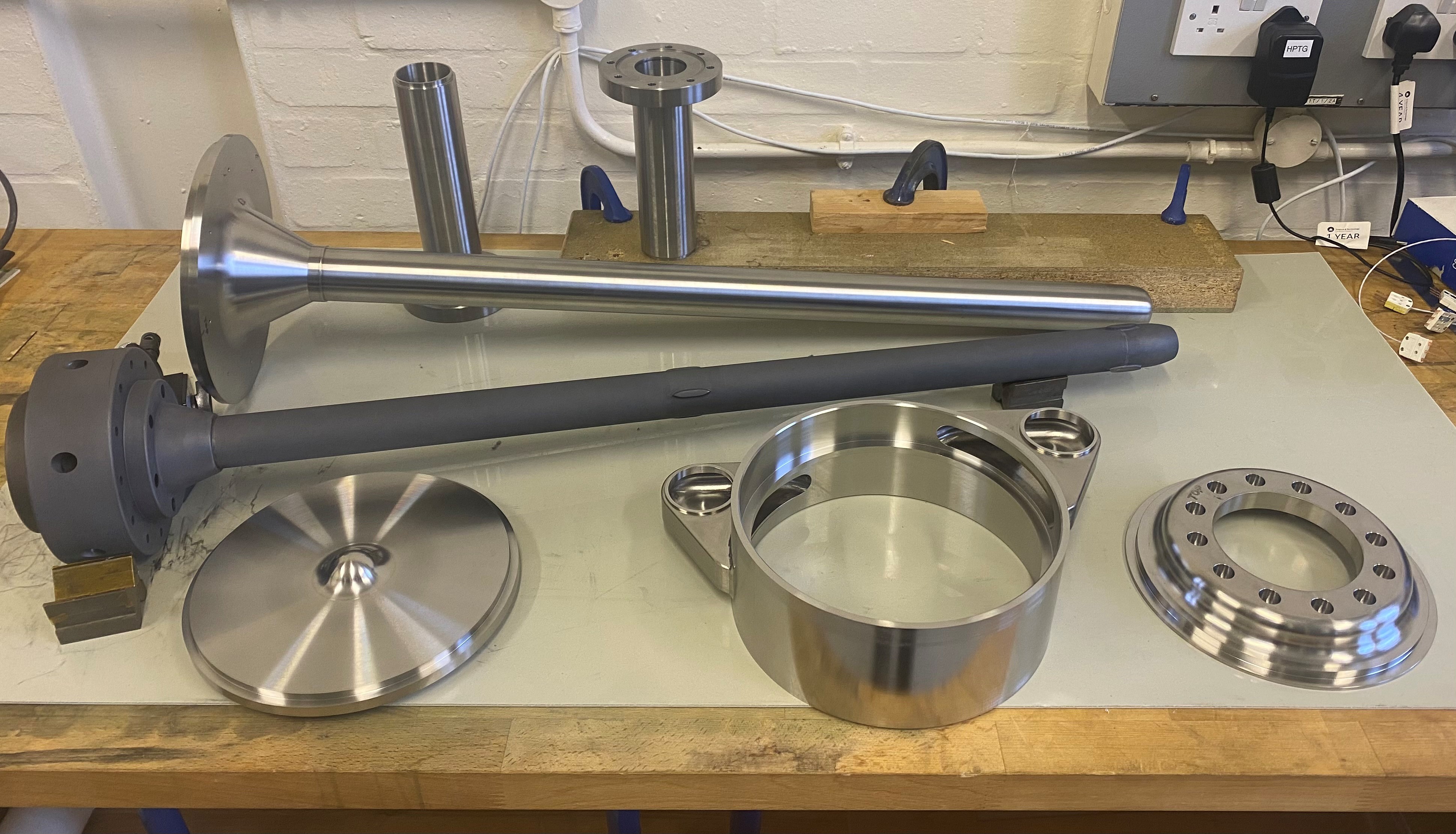 The new Mazak QTE-200 CNC turning centreT2K (Tokai to Kamioka) is a long-baseline neutrino facility located in Japan, designed to study neutrino oscillations - a quantum mechanical phenomenon where neutrinos with a specific lepton 'flavour' (electron, muon or tau) are later measured to have another.
The new Mazak QTE-200 CNC turning centreT2K (Tokai to Kamioka) is a long-baseline neutrino facility located in Japan, designed to study neutrino oscillations - a quantum mechanical phenomenon where neutrinos with a specific lepton 'flavour' (electron, muon or tau) are later measured to have another.
The experiment's current neutrino target, designed and developed by our High Power Targets Group (HPTG), consists of a graphite rod inside a thin-walled titanium tube.
With the use of the Mazak machine, this target design is being lengthened, from around 0.9 m to 1.2 m, to boost the experiment's efficiency. Though this sounds simple, it's a major technical challenge.
The target operates inside a magnetic horn where high-energy protons smash into the graphite rod to produce pions. These pions, positively or negatively charged, are focused by the horn into a beam which rapidly decay into muons and muon neutrinos.
 Target componentsThe horn focuses pions of one sign and defocuses the other, producing either neutrinos or antineutrinos, depending on the experiment's needs. By extending the length of the target, more pions of the desired charge are produced and more pions of the unwanted charge are absorbed. In a billion-pound facility, even small performance gains like this can make a big difference.
Target componentsThe horn focuses pions of one sign and defocuses the other, producing either neutrinos or antineutrinos, depending on the experiment's needs. By extending the length of the target, more pions of the desired charge are produced and more pions of the unwanted charge are absorbed. In a billion-pound facility, even small performance gains like this can make a big difference.
However, upgrading the target isn't as easy as it sounds. Since T2K began producing data in 2010, any changes must work within the constraints of the existing facility.
In addition, a longer target is less stable, harder to manufacture, and must withstand extreme conditions: it is cantilevered (supported from one end) and sits within a horn that is blasted with 300,000 amps every second.
In the workshop, our technicians are fabricating the target's titanium tube (just 0.5 mm thick) using solid bars of high-strength titanium alloy.
This metal cannot be shaped using conventional methods, so it must be gun-drilled and turned on the lathe to tolerances tighter than 50 microns (thinner than a human hair). This highly specialised process has been developed over many years by HPTG in partnership with the workshop.
 T2K target in positionAchieving this precision requires:
T2K target in positionAchieving this precision requires:-
Vacuum furnace heat treatment to remove residual stresses and improve the straightness and roundness of the tube.
-
Precision mandrels (a shaft the component is fixed to while being turned) to prevent the tube from deflecting.
-
Ultrasonic testing equipment to measure wall thickness by sending an acoustic pulse through the component.
-
A very patient and highly skilled machinist to get the lathe precisely set up.
The new Mazak machine will play a central role in the successful prototyping of the upgraded target over the next two years.
Thanks to our teams' unique expertise, capable of taking a target from design through engineering analysis, we can deliver a high-performance, cost-effective solution for the future of T2K's neutrino science.
Read more science highlights
